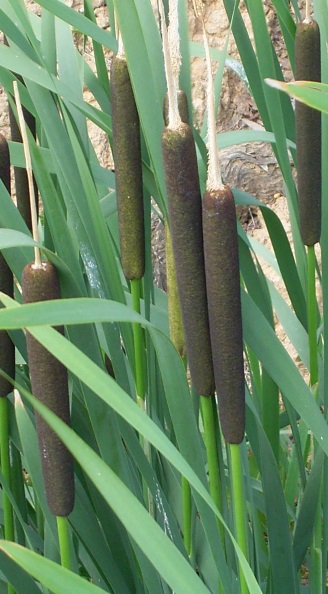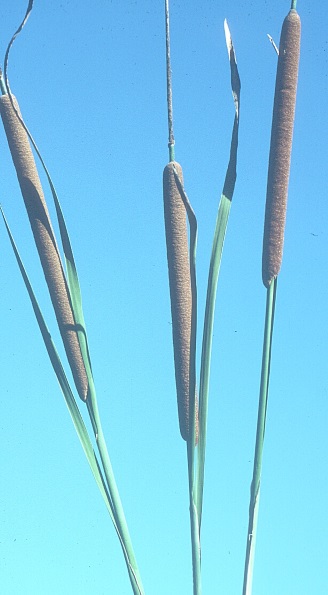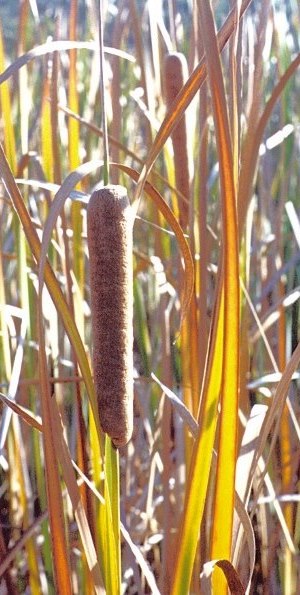Cumbungi - native and introduced (Typha species)
Narrow-leaf Cumbungi (Typha domingensis) - native
Broad-leaf Cumbungi (Typha orientale) - native
Reedmace (*Typha latifolia) - introduced
Other names: Bulrush.
Family: Typhaceae (Bulrush family).
Occurrence: Cumbungi usually grows in shallow water in dams and reservoirs and along slow-flowing creeks, particularly where the native tree cover has been removed.
Identification:
- the plants grow to several metres high
- the leaves are green and strap-shaped
- the male flowers are in a narrow spike above the broader female flower cluster
- the female flowers are packed tightly into a brown-coloured cylinder.
It is not always easy to distinguish between the different species. Microscopic details of the flowers are used to separate the species. Other characters can be used, with less certainty.
Name: domingensis: from San Domingo.
The female flower-head, when ripe, releases dense white clouds of floating seeds. One head may release 200,000 seeds. The floury underground stems (rhizomes) provided a staple food for the aborigines, and fibres from Cumbungi were used to make string.
Cumbungi often grows with Common Reed (Phragmites australis) which is a grass species, and its flowers form an open spray.
Photo 1: Narrow-leaf Cumbungi (Typha domingensis). Forest Creek.
2: Broad-leaf Cumbungi (T. orientale). Crocodile Reservoir, Fryerstown. The upper male flowers have fallen off.
3: Reedmace (*T. latifolia). McKenzies Hill.


